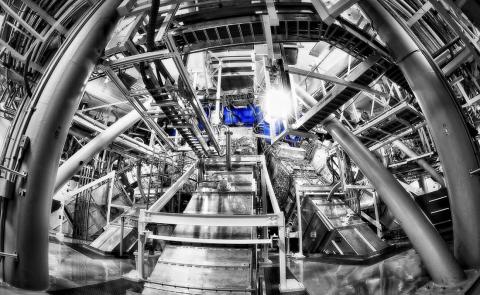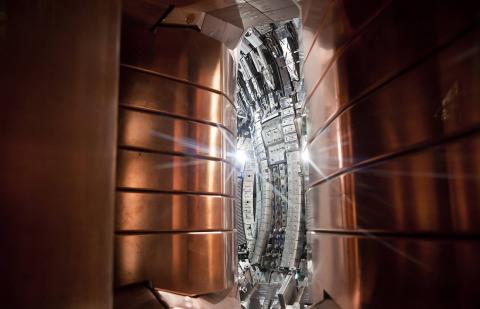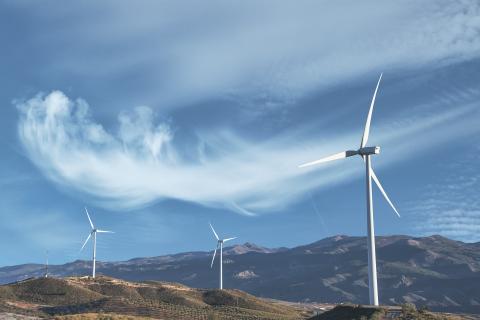Reactions to new nuclear fusion milestone in the US, which could be the first net gain of energy
Scientists at Lawrence Livermore National Laboratory in California have announced the success of an experiment at their National Ignition Facility. With analysis of the results still underway, it would be the first net energy gain from a nuclear fusion. The news was revealed on Sunday by the Financial Times newspaper with information provided by sources with knowledge of the experiment.

José Manuel Perlado - fusión nuclear EN
José Manuel Perlado Martín
Emeritus Professor of Nuclear Physics and President of the Instituto de Física Nuclear Guillermo Velarde (IFN-GV) at the Universidad Politécnica Madrid (UPM).
The current news was received on 7 December 2022 from our collaborators at Lawrence Livermore National Laboratory (LLNL) and other European and American laboratories associated with the "Guillermo Velarde" Nuclear Fusion Institute and will be confirmed tomorrow 13 December, according to the announcement of the press conference to be held in Washington by the US Secretary of Energy Jennifer M. Grandholm and the Under Secretary for Nuclear Security and National Nuclear Security Administration Jill Hruby.
According to this information, on 5 December 2022, the National Ignition Facility (NIF) at LLNL in California (USA) achieved a net energy of 2.5 megajoules with a laser of 2.1 megajoules and, according to some sources, the possible achievement of up to 3 megajoules is under discussion.
This means that for the first time in the history of physics and energy a nuclear fusion device, through the method of inertial confinement using a laser, has achieved ignition and energy gain in the laboratory.
Experiments in January 2022 (published in Nature/Nature Physics on 26 January) had already achieved 1.3 megajoules with a laser shot of 1.7 megajoules, but also demonstrated the mechanism of propagation of the thermal wave of burning in the fuel, which gives confidence that more and more energy can be obtained in the process. This was repeated in September 2022 with an energy of 1.2 megajoules. It is now clearly demonstrated that the process is known and the key limit of obtaining more energy than is used in laser illumination of the deuterium and tritium fuel target is exceeded.
This is a huge step towards believing that this can indeed be the massive and concentrated high energy density source that humanity needs.
Clearly, there is still some way to go to realise this energy extracted from the bonding of hydrogen nuclei. But this achievement should mean that research into target illumination systems, fuel capsule manufacture, reaction chamber systems and materials suitable for the conditions of this fusion line must be substantially increased, unlike what has been happening in the European Union.
For the "Guillermo Velarde" Nuclear Fusion Institute of the Polytechnic University of Madrid, officially created in 1982 for this research and unique in Spain, a consequence of the work begun by Professor Guillermo Velarde in the early 1970's at the Nuclear Energy Board, it means the culmination of 40 years of belief and faith in the beauty and practical potential of this idea, on which thousands of articles have been published in its entirety both in the physics of the process and in the physics of the technology that would make the reality of a power plant feasible.
Carlos Hidalgo - fusión nuclear EN
Carlos Hidalgo
Head of the Experimental Division of the National Fusion Laboratory, Centro de Investigaciones Energéticas, Medioambientales y Tecnológicas (CIEMAT)
The practical realisation of nuclear fusion energy is one of the great challenges facing humanity in the 21st century.
The experimental results obtained at the National Ignition Facility (NIF) are of great scientific significance as they achieve for the first time an amplification of nuclear fusion energy of more than unity. This is a major scientific milestone.
The international scientific community is working on different alternatives (inertial and magnetic confinement) with varying degrees of development towards the practical realisation of nuclear fusion energy. The degree of integration of science and technology towards a nuclear fusion reactor differentiates the results of magnetic confinement (JET-2022) and inertial confinement (NIF-2022).



